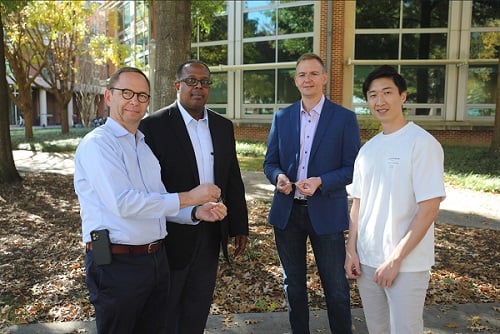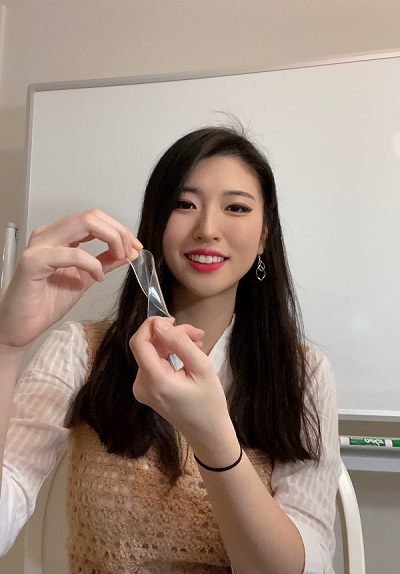ATLANTA, Dec. 27, 2021 — A stretchable semiconductor material developed by researchers at Georgia Institute of Technology (Georgia Tech) is able to act like a second layer of skin and detect ultralow levels of light. The researchers believe that their soft flexible photodetectors could enhance the utility of medical wearable sensors and implantable devices and support additional applications.
The work stems from a multiyear collaboration between Georgia Tech researchers from mechanical and computing engineering labs. The current development of a new level of “stretchability” for a photodetector is made from a synthetic polymer and an elastomer that absorbs light to produce an electrical current. The device is up to 200% more stretchable than its original dimension without significant loss to its electrical current.

Three engineering labs at Georgia Tech collaborated to demonstrate a new level of ‘stretchability’ of a photodetector. Pictured is first author Youngrak Park (right) with the lab leads (from left) Bernard Kippelen, Samuel Graham, and Olivier Pierron. Courtesy of Ben Wright, Georgia Tech.
Since conventional flexible semiconductors break under a few percentages of strain, the work offers a significant improvement, according to Oliver Pierron, a professor in the George W. Woodruff School of Mechanical Engineering.
“Think of a rubber band or something that’s soft and stretchable like human skin, yet has similar electrical semiconducting properties of solid or rigid semiconductors,” said Canek Fuentes-Hernandez, a co-principal investigator formerly in the School of Electrical and Computer Engineering and now an associate professor at Northeastern University. “We’ve shown that you can build ‘stretchability’ into semiconductors that retains the electrical performance needed to detect light levels that are around hundred million times fainter than produced by a light bulb used for indoor illumination.”
Determining the proper balance of chemical compounds to produce a soft material capable of generating and conducting electricity when exposed to light was the result of two and a half years of work by study first author Youngrak Park.

Kyungjin Kim, a professor at the University of Connecticut, demonstrating a stretched elastomer film. Courtesy of Kyungjin Kim.
Proving the material’s “stretchability” was another matter, given that a single layer of the material is 1000× thinner than a human hair. Park provided samples to Kyungjin Kim, at the time a Ph.D. student and now an assistant professor at the University of Connecticut, to test durability. A sample with a thickness of 500 nm eventually validated the work.
“It was still super thin. Under dry conditions, it would just crumble. We had to use a water reservoir to keep its shape,” Kim said.
Though the material has been integrated into a photodetector and tested for electrical functionality, more testing and optimization is needed to show the material’s “stretchability” under multimodal loads and its shelf stability, the researchers said.
“What’s exciting is what these materials and the devices will enable us to develop — namely, the concept of intelligence systems,” said Samuel Graham, former chair of the Woodruff School of Mechanical Engineering and now dean of engineering at the University of Maryland. “You have functional surfaces that combine sensors that monitor all kinds of physical properties.”
The research was published in Science Advances (www.doi.org/10.1126/sciadv.abj6565).